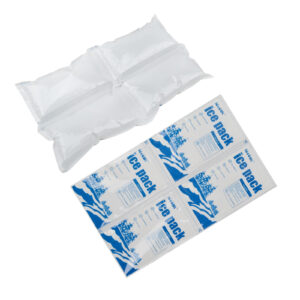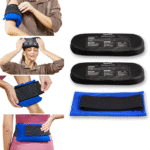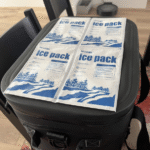Pacotes de gelo seco xl: Como dimensionar e enviar 2025
Atualizado: Agosto 18, 2025 — 7–9 min read
Se você enviar perecíveis, dry ice packs xl help you hold temperature longer with fewer pieces and simpler handling. Use XL gel or PCM packs for 2–8 °C and most frozen lanes; move to dry ice only when you need ultracold or extra‑long routes. Plan dry ice at ~5–10 lb per 24 h, and remember USPS caps air mail at ≤5 lb per piece. Validate with lane tests and a logger.
-
Como dry ice packs xl differ from dry ice, and when to choose each
-
XL sizes, dimensions, and fit tips for 24–96 h lanes
-
A copy‑and‑paste packout estimator for gel/PCM and dry ice
-
2025 regras: E 1845, Rótulo da classe9, Massa líquida, ventilação (ar & postal)
-
Tendências: −21 ° C PCM, drain‑safe gels, EPR‑driven reuse programs
What are “dry ice packs xl,” and when should you use them?
Resposta curta: Dry ice packs xl are extra‑large gel or PCM bricks (often 48–64 oz) that hold a target band (por exemplo, 2–8 °C or −20 °C class) without hazmat steps. Use them for chilled or moderate frozen shipments. Escolha gelo seco (CO₂ sólido a -78,5 ° C) for ultracold targets or long, hot lanes where gel/PCM cannot hold.
Por que isso importa: Gels and PCMs “park” temperature near their phase point, reducing freeze damage to sensitive foods or biologics. Dry ice drives far colder and lasts longer but triggers UN 1845/Class 9 labeling and venting. A practical default: dry ice packs xl for 2–8 °C and many frozen SKUs; dry ice only when route risk demands it.
XL sizes and fit for dry ice packs xl
Standardized XL footprints let you design once and dual‑source later.
| XL Reference | Typical Weight | Typical Size (L×W×H) | O que isso significa para você |
|---|---|---|---|
| XL Gel Pack | 48 oz | ~10.25″×7.75″×1.5″ | Fewer pieces for 48–72 h lanes; easy training. |
| XL+ Gel/PCM | 64 oz | ~11″×8″×2″ | Higher cold mass for 72–96 h; reduces air gaps. |
| −21 °C PCM Brick | 48–64 oz | 7–10″×11″ class | Subzero holds without −78.5 °C overcooling. |
Fit tip: Tight fit beats extra mass. Eliminate voids before adding more coolant. For freeze‑sensitive payloads, buffer with corrugate or switch to 4–5 °C PCMs.
Dicas práticas que você pode usar hoje
-
Condição prévia: Freeze gels/PCMs solid (24–48 h at ≤−18 °C); pre‑chill the shipper.
-
Colocação: For gel/PCM, ring the sides and lid; Para gelo seco, place on top and keep vents clear.
-
Frutos do mar: Never use dry ice with live seafood—use gel/PCM only.
Real‑world result: A frozen treat brand swapped four 32 oz packs for two 64 oz dry ice packs xl plus a small summer dry‑ice “topper.” RMAs fell by ~70% and delivery windows widened by 6–10 h on hot lanes.
Quantos dry ice packs xl do you need?
Quick start: For 2–8 °C, target ~1 lb gel per ft³ per 24 h as a starting point. For −20 °C class, test −21 °C PCM first; add a small dry‑ice booster only if trials fail. If you must use dry ice, plan ~7.5 lb per 24 h as a midpoint and label UN 1845 with net mass (kg). Always validate on your route.
Copy this estimator and tweak for your lane:
Important: Isolamento, fit, pré -condicionamento, and ambient drive outcomes. Use a data logger and run 2–3 pilots before scaling.
Which cooling path fits your target?
| Opção de resfriamento | Typical Target | Planning signal | O que isso significa para você |
|---|---|---|---|
| XL Gel (0 ° c) | 2–8 ° C. | 24–48h (insulation‑dependent) | Kits de refeições, laticínio; no hazmat. |
| XL PCM −16/−21 °C | Soft to deep frozen | 24–72h | Subzero without ultracold risk; safer handling. |
| Gelo Seco (-78,5 ° C.) | Deep‑frozen/ultracold | ~ 5-10lb por 24h | Pistas longas/quentes; rótulo, ventilação, record net mass. |
Dicas acionáveis
-
Short summer lanes (≤48h): 2–3 dry ice packs xl per ~5 kg payload, placed around sides and lid.
-
Sorvete (−12 to −18 °C): Run XL −21 °C PCM around the perimeter; add a small dry‑ice topper in July/August.
-
Clinical swabs/vials (ultracold): Vented dry‑ice shipper; list UN 1845 and net mass (kg) on the label/air waybill.
Gelo seco vs. dry ice packs xl: which is right for your lane?
Resumindo: Escolher dry ice packs xl for most refrigerated and many frozen shipments. Use dry ice for −70 °C class or long, hot lanes. Dry ice is regulated as UN 1845 (Classe9), requires vented packaging, and must show net dry‑ice mass (kg). USPS air mail is limited to ≤5 lb per piece.
2025 rotulagem & venting checklist (ar & postal)
-
Marca E 1845 and display a Classe9 Diamante de risco (≥100 mm).
-
Registro Massa da rede seca (kg) on the label/air waybill.
-
Keep the shipper ventilado; never seal dry ice in an airtight container.
-
USPS AIR: ≤5lb gelo seco por correio; additional packaging/marking rules apply.
Nota de segurança: CO₂ exposure limits matter on pack lines and in vehicles. OSHA 8‑h TWA is ~5,000 ppm; NIOSH STEL is ~30,000 ppm. Ventilar, monitor, and train.
2025 conformidade & EHS for dry ice packs xl e gelo seco
-
IATA 2025: Use the current acceptance checklist for dry ice as a refrigerant; no DG declaration is needed when cooling non‑dangerous goods, but UN 1845, Massa líquida, e ventilação são obrigatórios.
-
Carrier specifics: Follow UPS/FedEx job aids for label size and wording; check operator variations before booking.
-
USPS PUB 52 (Ar): ≤5 lb cap per mailpiece; surface services can exceed.
2025 trends in cold chain and dry ice packs xl
-
Reusable −21 °C PCM “dry‑ice alternatives”: More lanes can avoid hazmat while meeting subzero targets; Validar em sua rota.
-
Drain‑safe & “no‑sweat” gels: Better unboxing and simpler disposal guidance for DTC programs.
-
EPR momentum: Oregon’s Recycling Modernization Act launched July 1, 2025; CA/CO/MN are in 2025 phases. XL PCM programs and take‑back loops reduce single‑use refrigerant waste.
Perguntas frequentes
Q1: Are “dry ice packs xl” literally dry ice?
Não. They are extra‑large gel or PCM packs that avoid dry‑ice hazmat steps. Use them for 2–8 °C or moderate frozen; reserve dry ice for ultracold or long, rotas quentes.
Q2: How many dry ice packs xl for 36 h at 2–8 °C?
Comece próximo 0.25 pack‑mass per kg payload and add a summer factor (por exemplo, ×1.2). Validate with a logger and a small pilot.
Q3: Will frozen gels freeze vaccines?
Sim, they can. For refrigerated biologics, use 4–5 °C PCMs and add a buffer layer.
Q4: Can I mail dry ice?
Sim, interno, but USPS air caps dry ice at ≤5 lb per mailpiece and requires specific packaging and venting.
Q5: How fast does dry ice “disappear”?
Plan on ~5–10 lb per 24 h; add a day of margin for delays. Test on your lane.
Resumo & Recomendações
Usar dry ice packs xl for most 2–8 °C and many frozen shipments; switch to dry ice for ultracold or extended summer routes. Precondition packs, eliminate voids, and place gels/PCMs around the sides and lid. If dry ice is present, label UN 1845, display the Class 9 diamond, record net mass (kg), and vent the box. Validate with pilots and a logger before you scale.
PRÓXIMOS PASSOS (CTA):
-
Map SKUs by temperature target and route duration.
-
Pilot two packouts (XL PCM‑only vs. hybrid with a small dry‑ice topper).
-
Standardize label/vent SOPs where dry ice appears.
-
Launch an XL PCM return/reuse loop to support 2025 EPR goals. Talk to Tempk for a fast packout audit.
Sobre Tempk
Nós projetamos, teste, and standardize passive cold‑chain packouts that cut costs without risking payloads. Our team specializes in XL PCM bricks and gel systems for 2–8 °C and frozen lanes—and compliant dry‑ice workflows when required. Clients see fewer out‑of‑spec deliveries and lower shipping costs through accurate sizing, melhor isolamento, and clear SOPs aligned with 2025 regulamentos.
























